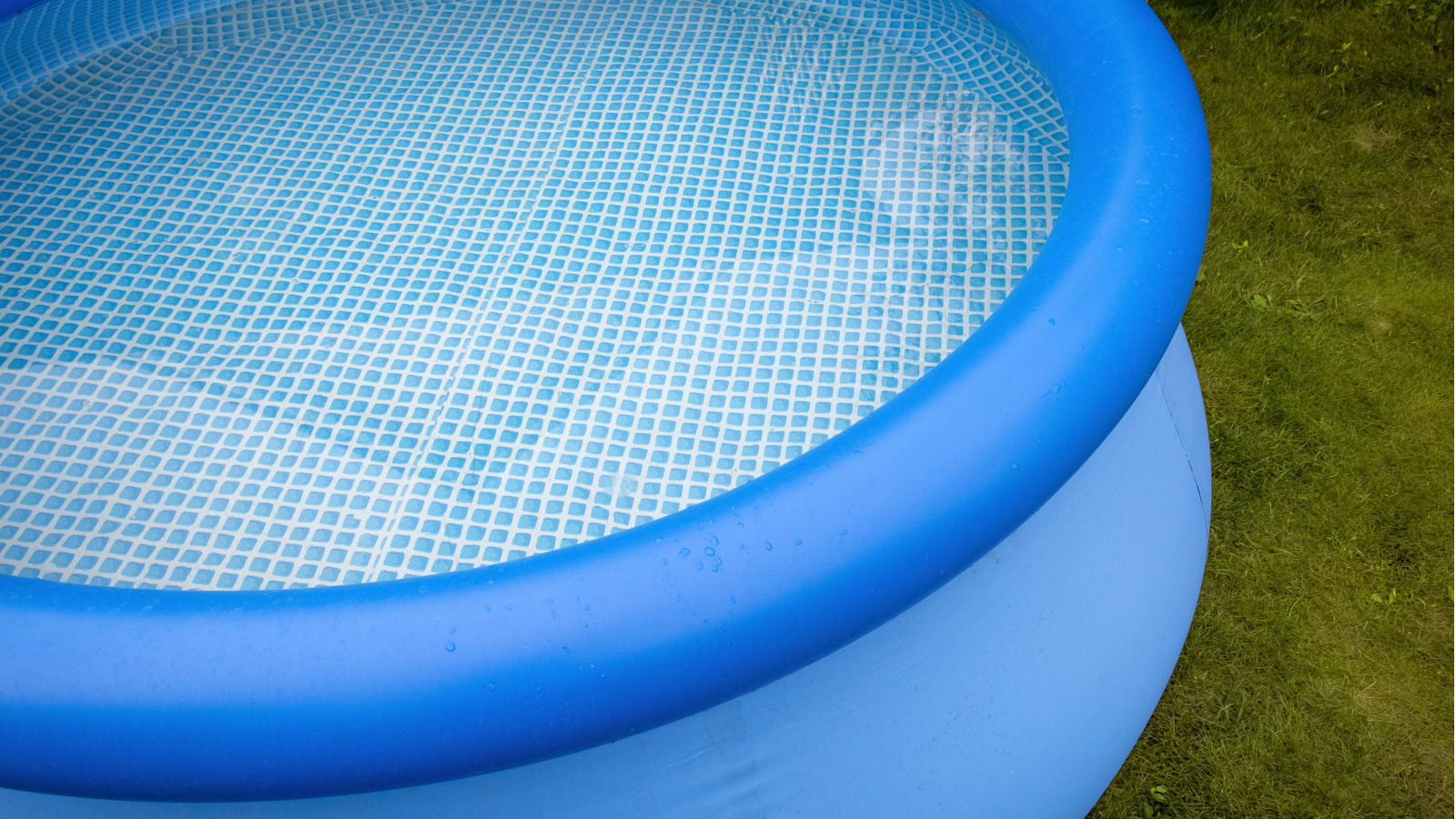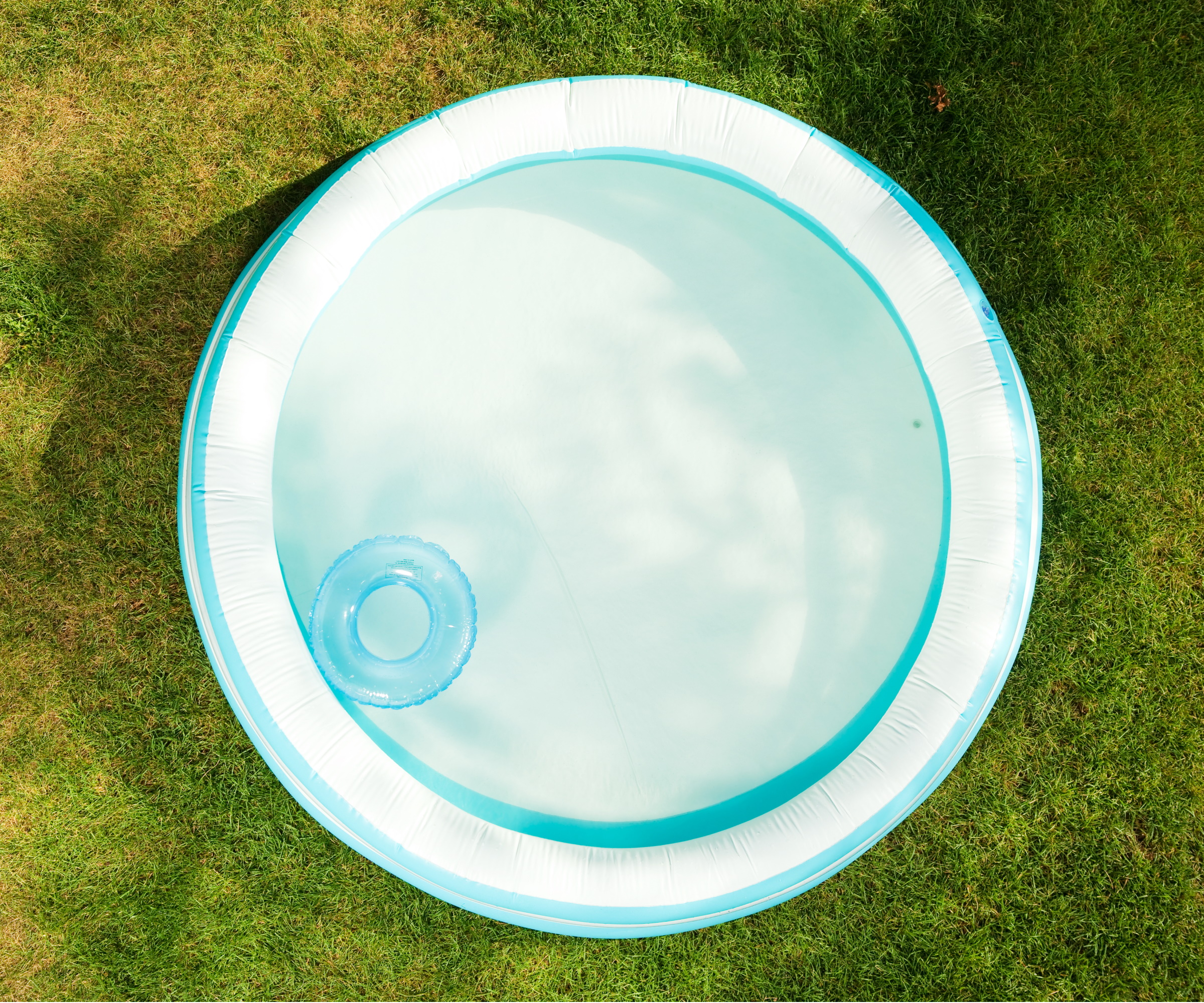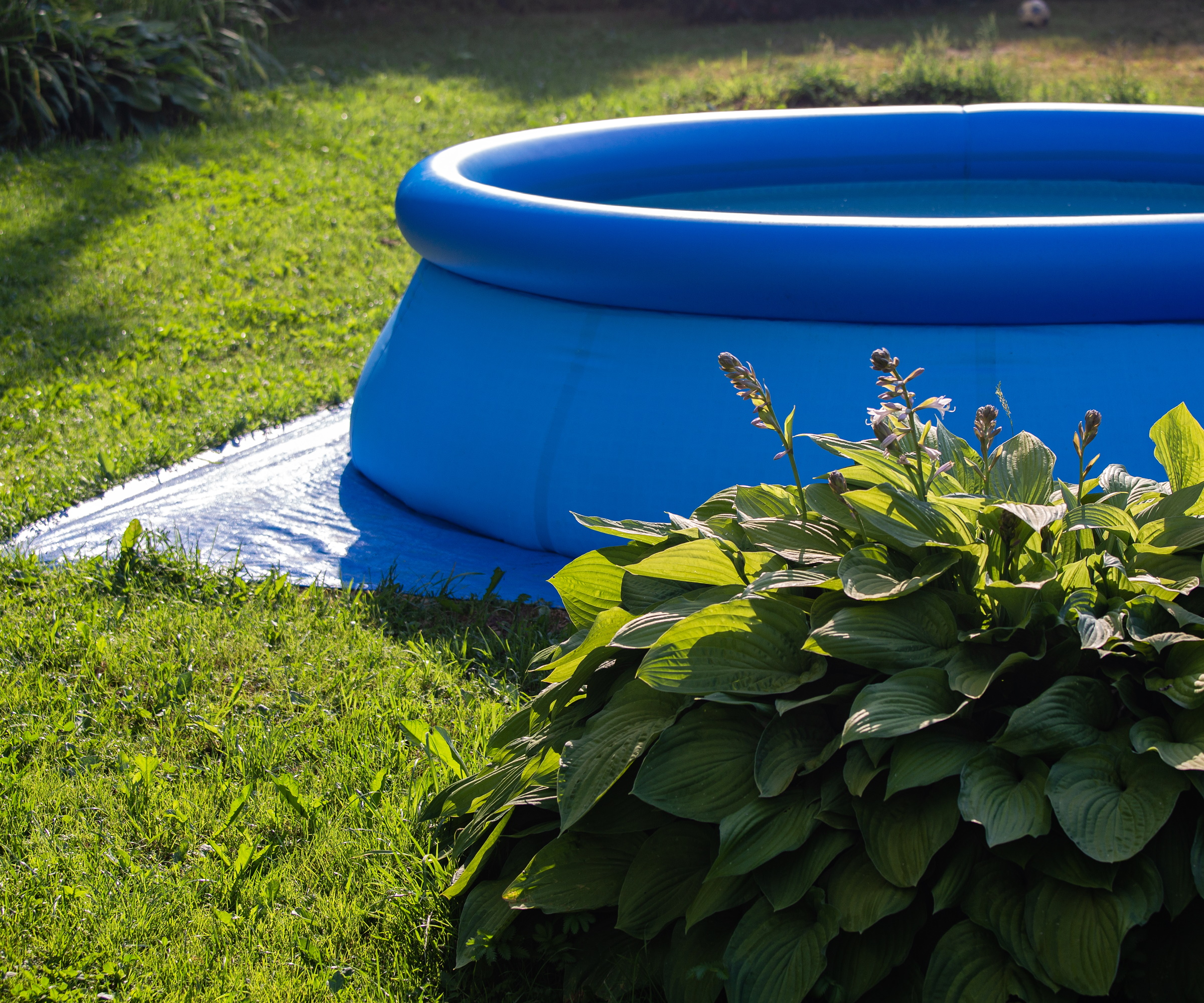How to not kill grass under a pool – expert tips for keeping your lawn alive
Doing these things can save you the job of repairing your lawn after summer


If you're used to putting away your inflatable pool at the end of summer while cringing at the sight of the yellow and brown grass beneath, then it's time to learn how to properly protect your grass from pools.
You may already be familiar with repairing patches in grass if this is a annual occurrence for you, however taking the time to find out how to not kill grass under an inflatable pool can save you a lot of time in the long-term. While there are so many joys of setting up your temporary pool for summer, having to deal with the aftermath can add to your already-long fall gardening checklist.
The good news is you can make the most of having a pool for summer and not kill your grass in the process by following these expert tips.

How to not kill grass under a pool
Keeping a pool on you lawn for summer can result in dead patches, something you'll have to tend to in your fall lawn care regime. However, it is possible to prevent and reduce the damage made to your grass while enjoying your pool. Here's everything you need to know.
Why does a pool kill grass beneath it?

It's worth first understanding why a pool kills grass before learning how to prevent it. It simply comes down to the fact your grass lacks access to essential resources while a pool sits on top of it.
'They kill grass because they block the sunlight and prevent photosynthesis from occurring, which starves the plant and ultimately kills it off if it stays in place long enough,' explains Craig Elworthy, founder of Lawnbright.
Photosynthesis is vital for any plant. It's the process of converting sunlight into energy, driving growth. In the case of grass, photosynthesis helps keep a lawn green and thick.
Design expertise in your inbox – from inspiring decorating ideas and beautiful celebrity homes to practical gardening advice and shopping round-ups.
Of course, another contributing factor is the lack of water your grass is getting. If you keep your pool in the same spot for weeks or months at a time, water won't reach the grass beneath when you water grass elsewhere in your yard or when you leave your sprinkler on. In the heat of summer, this will dry out the grass and dehydrate it.

Craig is the Founder at Lawnbright, a lawn care subscription service featuring all natural products that are safe for kids and pets. Craig advises on lawn care, natural lawns and other similar topics.
How to not kill grass under a pool

While there isn't a convenient fool-proof way to ensure your pool causes no damage to your grass, other than putting it away after each use, there are a few things you can do to prevent and reduce detrimental damage to your lawn.
'Make sure to move the pool around the lawn, leaving it for no longer than a few days at a time,' suggests Craig.
If you're concerned about wasting the water in your pool by having to empty it and move it regularly, repurpose it to water your plants. This is a great water-saving tip to be less wasteful in your yard.
'You should also fertilize your lawn and water it thoroughly in advance of placing anything on it,' Craig adds. 'This will strengthen your lawn and allow it to resist the stresses of being without water and sunlight for an extended period of time.'
Try using this lawn fertilizer from Amazon. It can also be a good idea to put this pool liner from Amazon down to prevent the grass around your pool becoming oversaturated.
FAQs
How do you repair dead grass under a pool?
If you've had an object like a pool sitting on the same patch of grass for an extended period of time, it's likely your grass will die and turn brown from a lack of sunlight and water. Luckily, there are plenty of ways to repair your lawn so your grass can look green once again.
'If it’s dead, the best thing to do would be plant grass seed. You’ll need to rake the area of any debris, loosed up the compacted soil and then add new seed,' says Craig Elworthy, founder of Lawnbright. 'Remember to be patient. Dormant grass takes a while to come back. It won’t happen overnight but it will come back,' he adds.
You might notice a similar result of dead grass if you have a trampoline on your lawn or even beneath trees. The same rule applies; you should try and move objects on your grass regularly to prevent grass dying. Trees, of course, are not as easy to move. However, there are some hacks for getting grass to grow under trees you can try.

Tenielle is a Gardens Content Editor at Homes & Gardens. She holds a qualification in MA Magazine Journalism and has over six years of journalistic experience. Before coming to Homes & Gardens, Tenielle was in the editorial department at the Royal Horticultural Society and worked on The Garden magazine. As our in-house houseplant expert, Tenielle writes on a range of solutions to houseplant problems, as well as other 'how to' guides, inspiring garden projects, and the latest gardening news. When she isn't writing, Tenielle can be found propagating her ever-growing collection of indoor plants, helping others overcome common houseplant pests and diseases, volunteering at a local gardening club, and attending gardening workshops, like a composting masterclass.